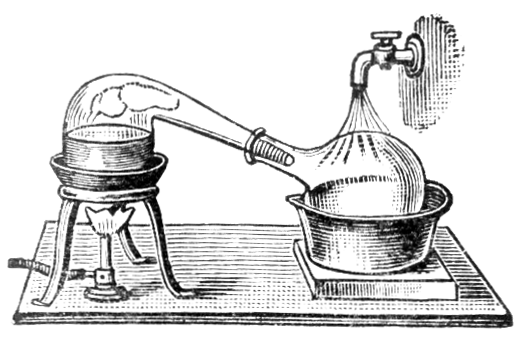alembic

An alembic is a type of distillation apparatus used for the production of essential oils and other distilled products. It consists of a still with a cylindrical or spherical body and a long, narrow neck. The body of the alembic is typically made of copper, which is a good conductor of heat and has antimicrobial properties that make it ideal for distillation.
The alembic is used to separate the volatile compounds in a mixture, such as the essential oils in a plant, from the non-volatile components. The mixture is heated in the body of the alembic, and the vapors rise up through the neck and into a condenser, where they are cooled and turned back into a liquid. The resulting liquid, known as the distillate, contains the volatile compounds that were present in the original mixture.
Alembics have been used for centuries in the production of essential oils, perfumes, and other distilled products. They are also used in the production of alcohol, such as brandy and gin.
Alembics were also associated with experiments in alchemy. The term (from the Arabic al-ambiq, "the still") strictly refers only to a particular form of distillation head. For most applications in chemistry, the alembic was superceded by the retort and receiver, and, more latterly, by the flask attached to a Liebig condenser.


